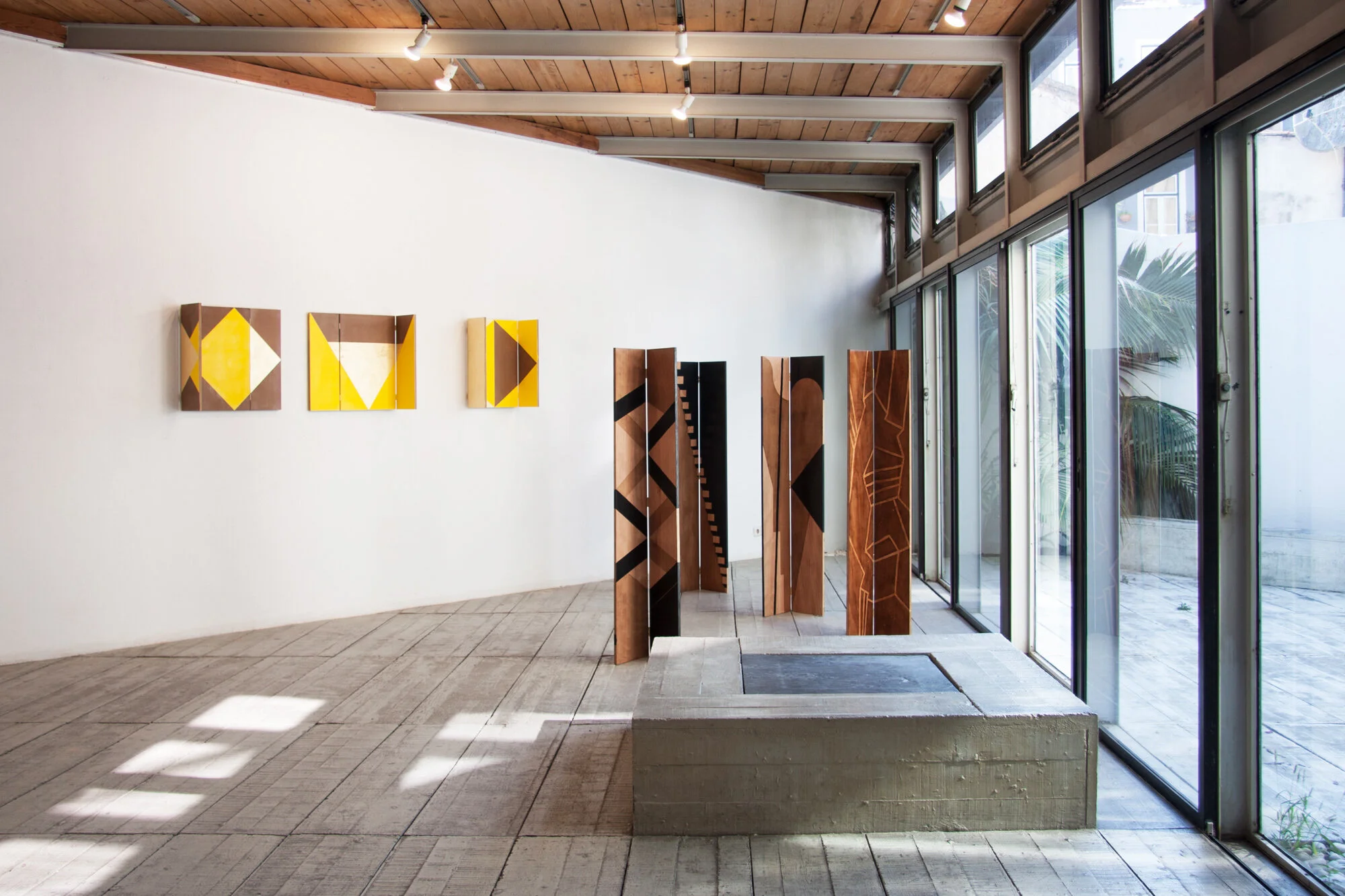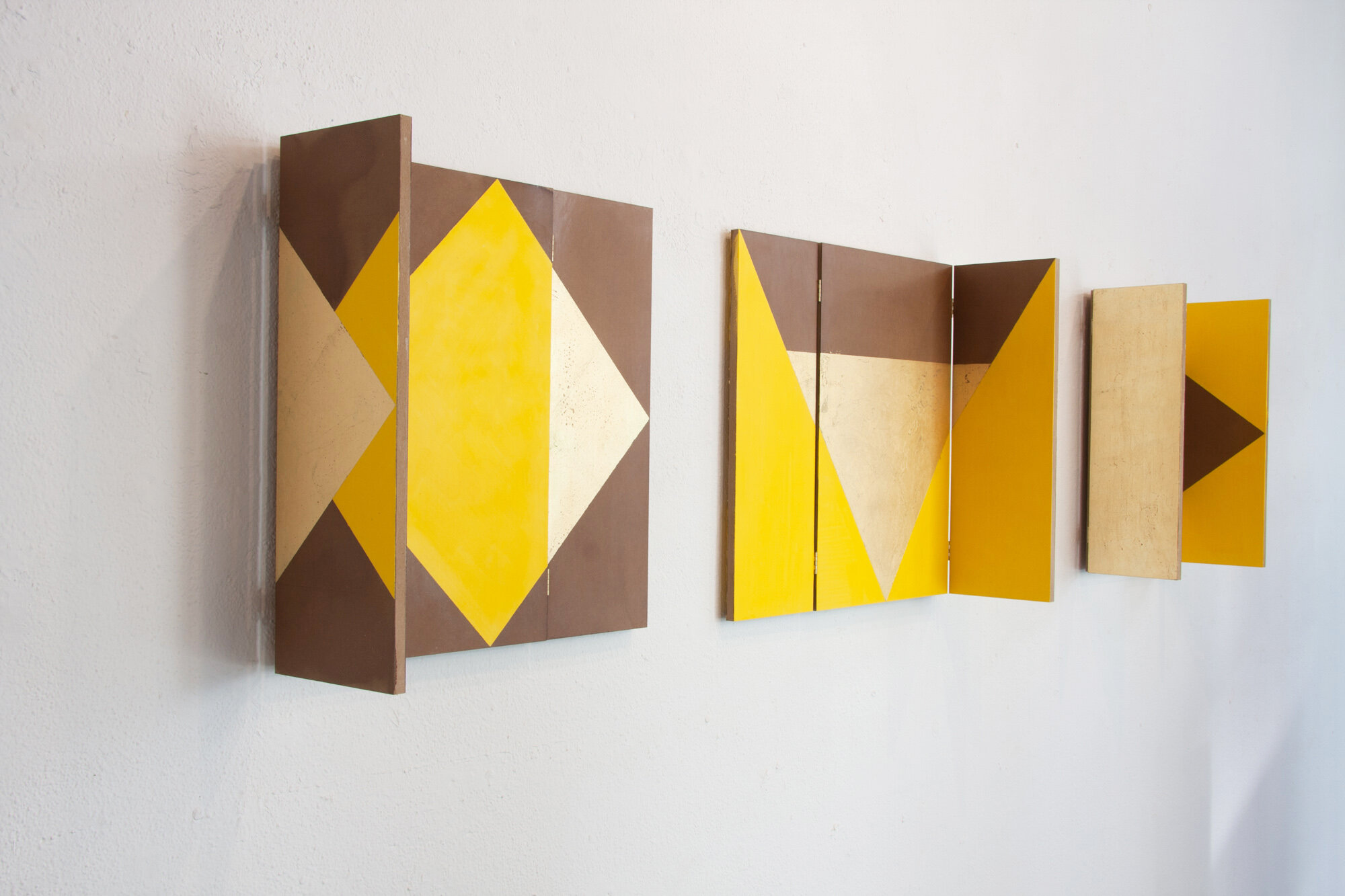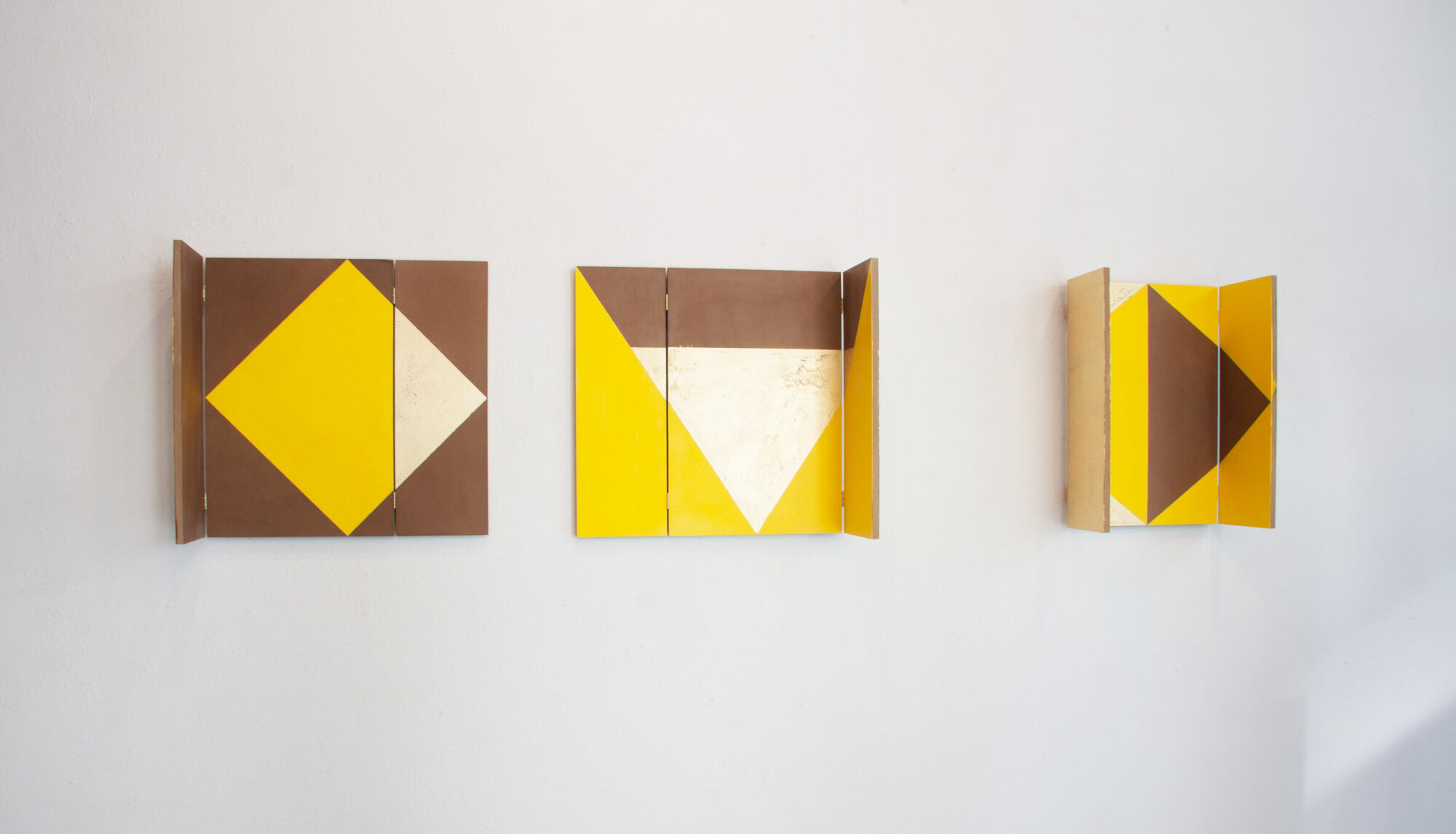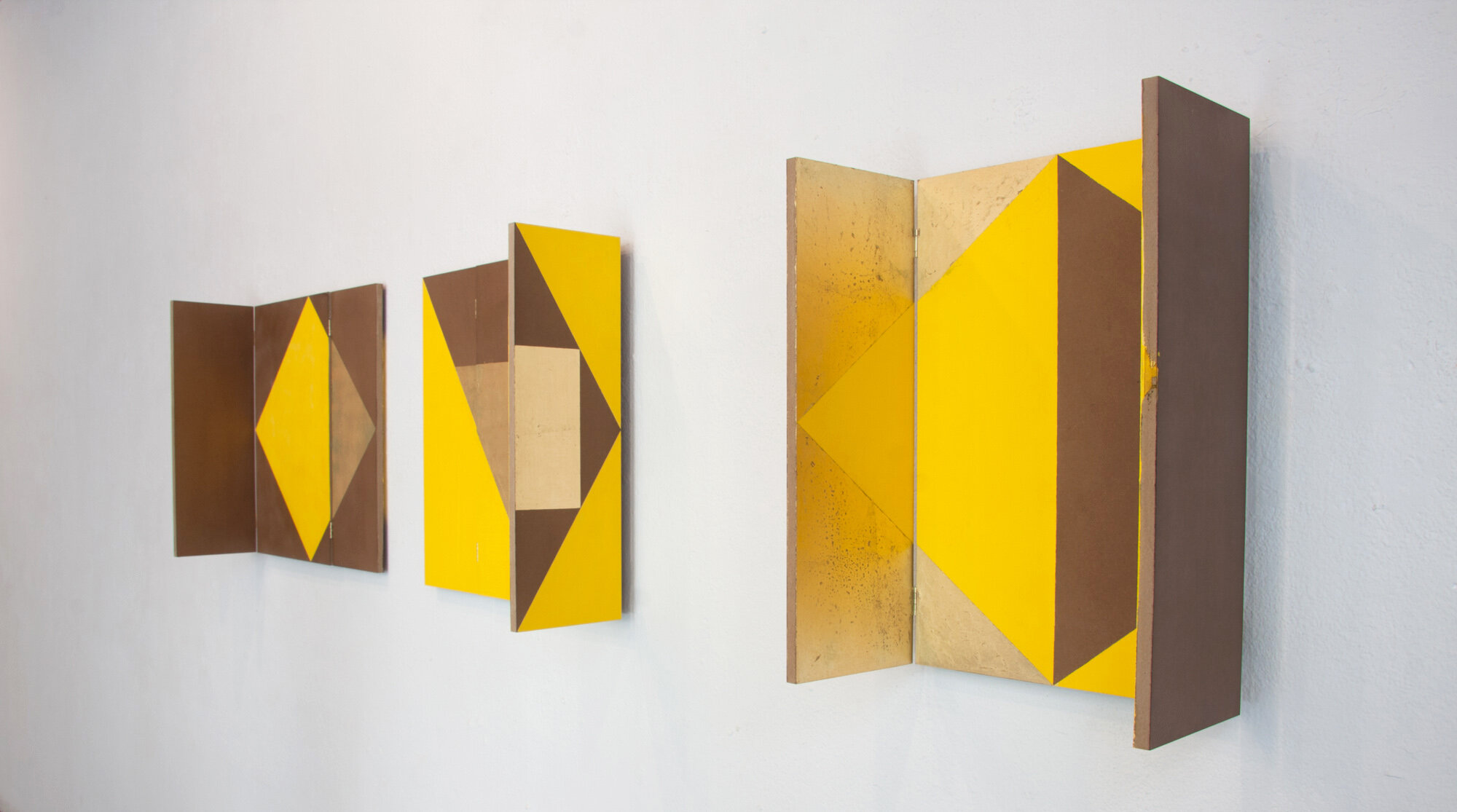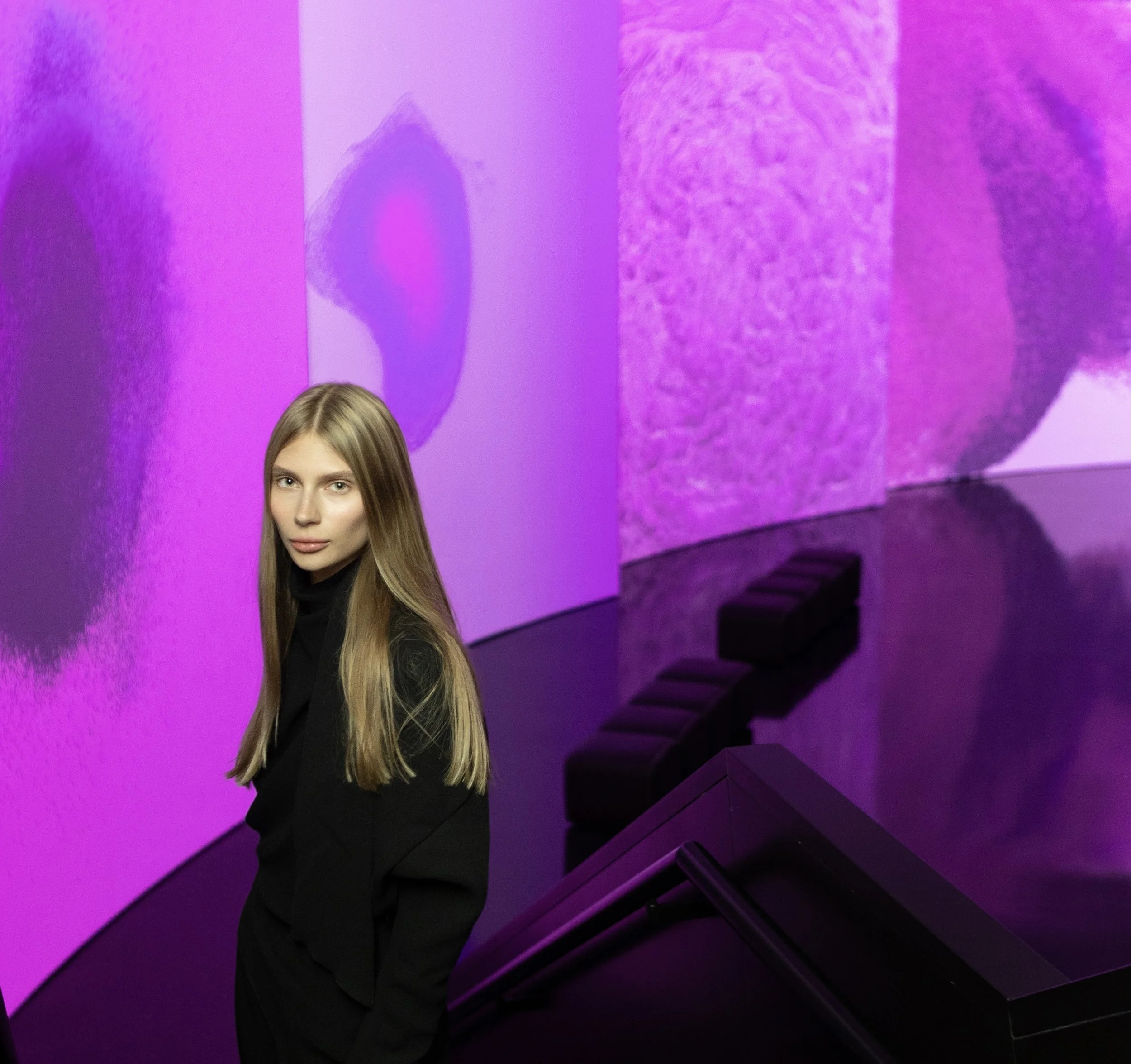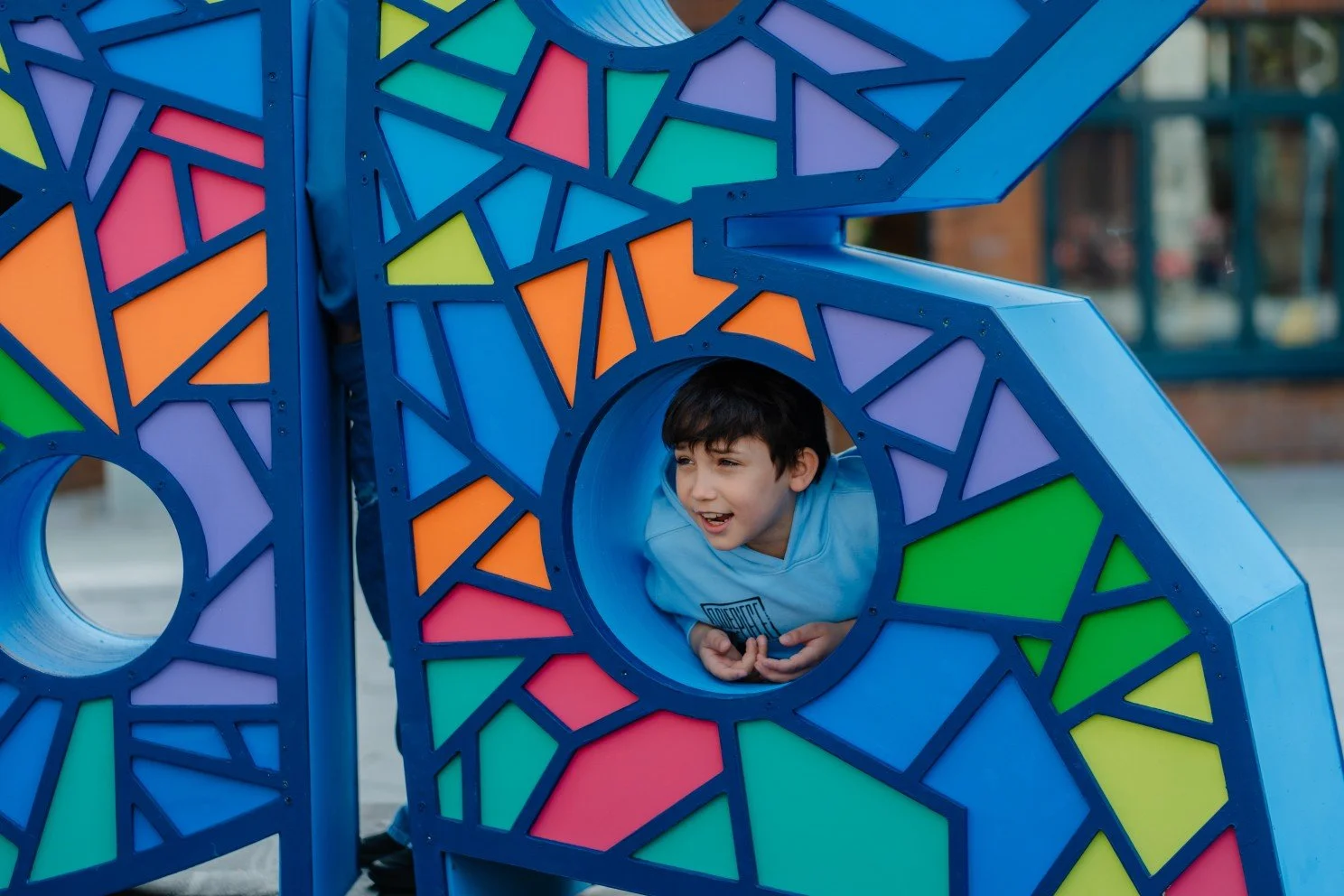10 Questions with Rui Aleixo
Born in Lisbon, Portugal, in 1976, Rui Aleixo lives in Lisbon and works between Lisbon and Bucelas. He studied Architecture at Lisbon University before studying painting at Ar.Co (Lisbon). There he also attended the Advanced Course in Visual Arts and Individual Project in the Sculpture Department. He is also a professional musician, having completed the Singing studies at Lisbon’s National Conservatory and High School of Music.
Rui Aleixo has been developing his work at his studio located in the countryside, near Lisbon. In his latest projects, he developed some series that he began exploring in solo exhibitions and reworked installations from the past, commissioned by private collectors.
He was one of the selected artists for the Visual Arts category in the 2006 Jovens Criadores Competition. Since then, he presented his work in group and solo exhibitions and worked on partnership and co-authorship projects, namely Transition at Kunsthaus in Hamburg, 2013 – a partnership with the German artist Valeska Schulz - and GENEALOGY 1012/2015 at Incubadora de Artistas / Galeria Cossoul, Lisbon 2015 – with ERRE collective (Rui Aleixo and Rui Dias Monteiro).
Rui Aleixo Photo credit Rui Dias Monteiro©
Rui Aleixo’s work embraces different techniques and supports, blurring the borders between art disciplines. The concept behind each project is the strength that formalizes it, which can result in drawing, engraving, installation, sculpture, painting, or performance. He chooses to develop concepts, ideas, and references related to the History of Art, Architecture, Materia, culture, or ancient crafts, and rework subjects and objects from the past, deconstructing them and presenting them in a different context under a contemporary light. Timeless ideas and objects, without expiring date but forgotten by the mainstream and emerging art, are inspiring references for this artist. This methodology makes particular sense to Rui Aleixo, who is always searching for practices and subjects that seem to be extinguishing themselves in the present moment. He likes to work as an archaeologist who, patiently and subtly, rediscovers what was once lost with his hands on the earth.
ARTIST STATEMENT
Rui Aleixo's work embraces different techniques and supports, blurring the borders of the art disciplines. Each project's concept is the strength that formalizes it, which can result in drawing, engraving, installation, sculpture, painting, or performance. He chooses to develop concepts, ideas, and references related to the History of Art, Architecture, Materia, culture, or ancient crafts and rework subjects, and objects from the past, deconstructing them and presenting them in a different context, under a contemporary light. Without expiring date but forgotten by the mainstream and emerging art, timeless ideas and objects are inspiring references for this artist. This methodology makes special sense to Rui Aleixo, who is always searching for practices and subjects that seem to be extinguishing themselves in the present moment. He likes to work as an archaeologist who, patiently and subtly, rediscovers what was once lost with his hands on earth.
Rui Aleixo, Photo credit Hugo Rodrigues Cunha©
Eikon | PROJECT DESCRIPTION
Rui Aleixo, Photo credit Hugo Rodrigues Cunha©
Eikon, the Greek word at the origin of Icon, is the basement of this project, where Rui Aleixo sought to cross the East tradition and its iconographic influence with his work. The books concerning the Art of the Icon of the Gulbenkian Foundation's Art Library, in Lisbon were the source of inspiration for creating these artworks.
Iconostase (Iconostasis) is a panel formed by autonomous modules. The installation of these paintings forms a panel that works as a mosaic, with new features in the artist's work, for its "baroque" side, and the use of figuration and more standardized graphic forms, almost in a pop language. The artist assumed the aesthetic and the formal heritage of the religious Icon, selecting and isolating its elements, shapes, and visual characteristics, and emptying its devotional and religious function. These "new icons" appear in a different sacred space, an art gallery designed by a great Portuguese modernist architect, Nuno Teotónio Pereira.
In the Chapas (Plates) series, Rui Aleixo followed up on a formal experience started at his previous exhibition. The partial oxidation of the copper plates creates the "printed image" of each piece.
The Dípticos (Diptychs) are "pictorial sculptures" or "sculptural paintings", installations with the human body scale. The design of each piece reveals the plastic characteristics of the wooden support in three variants.
Two other series of works complete this project. Quarteto (Quartet) is formed by four paintings that work as variations of one theme, with its rotation, inversion, and rotation's inversion, in a formal balance of constructivist inspiration. Each composition's design results from an overlapping of the geometric synthesis of various "bust icons" of the Russian school.
The Trio consists of three triptychs, where less noble-looking support coexists with a vibrant pigment and gold leaf. They are pluriform paintings, designed to reveal different forms, depending on the closing or the total or partial opening of each side of the triptych.
Rui Aleixo, Photo credit Hugo Rodrigues Cunha©
Could you tell us a little more about your background, and how did you begin making art?
The world of the arts fascinates me since my childhood. With my parents and brothers, we were going to attend concerts, visit museums and monuments. When I was in high school, I enjoyed almost all the subjects, but the artistic expression gave me a feeling of fulfillment: music, crafts, drawing, and visual expression. I started to go alone to contemporary art exhibitions in my early youth. I was fascinated by the variety of approaches, and I started to keep in contact with a universe of references that opened my horizons. When the moment came to decide on a specific study area, I've chosen the Arts. Later, applying for university, I had many doubts about the choice to make: I liked all the arts. Finally, I chose architecture, leaving painting as the second choice. I attended three years of the course, but, despite the good results, I felt that there was an academic side that kept me away from the act of "doing", and that limited my freedom in creation. However, I took great advantage of the theoretical and historical disciplines. Furthermore, the practice of drawing started to be an integral part of my daily routine.
I decided to interrupt the studies, and I left the country, with the idea of living a new service experience as a volunteer. I spent four years in France and one year in Bangladesh and India, and during that time, I've developed work in drawing and painting as a hobby. Upon returning to Portugal, I had to rethink what to do next. I chose the two things I liked the most: music and painting. I applied to the Music Conservatory, studying singing, and a non-academic school, famous in Portugal. I was accepted in both schools, and I chose to do both simultaneously. At the art school, my work, initially focused on painting, transformed itself and became closer to other artistic areas, namely installation, drawing, sculpture, and performance. And it was also then that I started participating in exhibitions and searching for my own way of art.
You are a multidisciplinary artist. You combine installation, performance, photography, moving images, and sounds. How do you define yourself as an artist?
I see myself as a curious artist. Curiosity is one of the driving forces in my work. It takes me looking for new answers and solutions. As an artist, I am, somehow, an archivist, an investigator, and an archaeologist. I am attentive to stimuli. I search for references that lead me to develop new researches, I look for concepts and ideas that I pretend to deepen and explore. More than inventing, I try above all to interpret with my own artistic language. I am also, somehow, an annotator, as I am interested in pointing out and drawing attention to some specific idea or aspect that deserves to be valued. I don't feel I need to say that I am exclusively a painter or a sculptor... The various artistic disciplines can serve my work, and I am lucky to feel at ease. And I'm also very practical: I like to find ways to do the work with my own hands and skills.
Rui Aleixo, Photo credit Hugo Rodrigues Cunha©
How did you evolve this way of working?
I've included my interests, naturally, into my way of working. I never had a very narrow taste. I like the plurality, variety, and eclecticism, but it is important to say that I do not like the haddock because it is important to follow a guiding thread. This internal logic gives coherence to the final result. I'm not speaking in a theoretical or abstract way. I give you a very simple example: when I was a child, and I was asked what my favorite color or food was, I was never able to answer. Because I liked different colors, and I loved many flavors, both sweet and savory. And this taste for variety, and the difficulty I have in choosing one and refusing the other possibilities, has always made me experiment and test various techniques and materials. I also have a very organized side, a bit like a collector, which makes me think of projects and exhibitions as possibilities to reveal a new aspect or detail. It is this balance between continuity and novelty that has characterized my artistic journey in recent years. The variation of the result and the materialization of the work's approach is not my first objective. It is a natural consequence of choosing the theme, idea, or concept I want to develop. When I start thinking about new work, I rarely know if, after it is finished, it will be a drawing, a sculpture, a painting, an action, or an installation.
Could you tell our readers about your relationship with nature and earth?
I am a city boy: I was born in Lisbon, and I love this city. But I always had contact with the countryside. My paternal grandparents lived in the countryside, not far from Lisbon. During my childhood, I spent most of my weekends and vacations at their home. (In fact, I just moved my studio to that house.) So, the field is also in my blood. But the idea ofnature seems to be a little anachronistic, almost in the domain of utopia or philosophical idea. What is nature really? Human beings have almost entirely transformed the landscape of our planet. However, there is incredible energy and a force (of nature) that astonishes me. When you look at the ocean, when you feel the Atlantic wind and the tides' strength, you cannot remain indifferent. When you see images of trees bursting from the ruins of Chernobyl... Then, I can say that I feel huge respect and veneration for this nature's strength and capacity for adaptation, reinvention, and transformation. And I feel completely involved in its safeguard and protection, and I know that our life as a species also depends on it.
Rui Aleixo, Photo credit Hugo Rodrigues Cunha©
But I feel even more viscerally connected to a nature inhabited by humans. I am interested in ancient generations' knowledge, the tradition of crafts that take advantage of the land, respecting it, and fully dialoguing with it. I believe in coexistence and cohabitation. Nature has always given space to the human being; the human being must inhabit the world without destroying it. And, as an artist, I try to create keeping an ethical sense. The world already has too much garbage.
How important is the minimalism expression in your final outcome?
There are some aspects of the minimal language that attract me, such as its clean side, the recurrence of geometry, and formal simplicity. But these same aspects are present in modernism and even in constructivism. Modernism is a great reference for me, not only in the aesthetic result but also by the great thinkers, architects, and artists who worked on it. The contagion of the different arts, the collaboration between artists and architects, and the diffusion of each of the disciplines' limits is something that interests me deeply because in my work's process, I also try to follow these paths. I also like to think about my projects, taking into account the physical space where I will present them, and this is something very recurrent in modernism. There are aspects of minimalism that I am not interested in exploring: the repetition without variation, the industrial production of the artworks, or the formal aspect where you cannot trace the artist's intervention. I use the geometric language often, I also use repetition, but I need variation and transformation. There is room for "error" in my work, in case it does not interfere with the final perception of the work, and I like to assume the presence of the artist's gesture.
Can you share a bit about the process of creating your project EIKON?
When I was invited to exhibit at Diferença gallery in Lisbon, I decided to think of it as a global project related to the architectural space and present several different series of works that would dialogue with each other. The gallery space was designed by a great Portuguese modernist architect, Nuno Teotónio Pereira, who had recently died. Somehow, I wanted to pay homage to this master, and take advantage of beautiful architecture, well thought out for its function: to show art. I started to look at that space as a kind of temple for art, and I choose to explore a theme, which in its essence is religious, adapting its sacredness to a new non-religious context. I consulted all the bibliographical works on Icon Art from the famous art library of the Calouste Gulbenkian Foundation in Lisbon. I surveyed the iconographic references that most interested me most, and there was the starting point for the new creations.
The centerpiece of this project was the iconostasis panel, an installation made up of 35 autonomous paintings, which occupied the central axis of the gallery and the deepest part of it. Of all the works, most figurative elements are selected, extracted from their contexts, expanded, transformed, and interpreted. Then, there were other series: diptychs and triptychs, two series where painting and sculpture have identical preponderance, the quartet and a series of partially oxidized copper plates. They came all from analyzing these oriental icons, their shapes, colors, geometries, contrasts, and recurring elements. And the final result also came from a desire to inhabit space and a certain theatrical and scenic dimension.
How do you keep yourself up to date with the latest digital trends and technologies that have a significant impact on the art world?
I cannot say that I am a highly technological artist, far from it. In fact, digital art has a small impact on me; it doesn't touch me, it doesn't move me, it doesn't intrigue me as much as physical art. Of course, there are exceptions, and there are great artists who work with these media and who are references for me. But my chosen work process includes using my hands, getting them dirty, building, constructing, testing, experimenting, and touching the materials. It is quite physical.
I use technology and the digital world superficially, more as a tool for publishing work, as a tool of information and research, and as help when preparing the project's plan. I also use them to record and archive. But there is nothing that can replace my paper notebook. (laughs)
Rui Aleixo, Photo credit Hugo Rodrigues Cunha©
Rui Aleixo, Photo credit Hugo Rodrigues Cunha©
You seem to be very aware of the history of works. Where do you see films, photo exhibitions, art performances today?
I'm a big art consumer. In normal times, I get to go to the cinema three times a week. I also often go to the theater. I attend film and documentary festivals. I try not to miss a performance or a contemporary dance show. I go to the opera more rarely - just because of its price -, and music is an integral part of my life. I am always attentive to cultural programming, and I note the exhibitions and concerts I don't want to miss on the agenda. Besides, I have a varied (and growing) library, and I always have a book (on paper).
When I travel, it is identical: to discover a city means to know its culture.
This way of consuming art can be seen, by some, as limited and conservative. For me, it makes all the difference to see live art, not through a computer screen. It is true that the possibilities are endless, but do we take advantage of everything we see on the computer? In my experience, when the choice is too large, I am not able to take it, and I lose my patience. Excess bores me.
Can you explain the role of an artist in society? And how do you accomplish yours?
This is a tough question, and I don't know if I have the right answer for it. In any case, I don't have an answer that is the same as yesterday or tomorrow. An artist is someone who, like most of humanity, seeks the meaning of his existence. A searcher, yes. Someone who seeks to find himself and who leaves evidence of his discoveries. I think this is already an important role: leaving shreds of evidence. These signs can help the rest of society in their own search.
An artist seeks to exceed his limits, often manages to reveal something greater than himself. Or different, at least. He is someone who opens doors, which lets you glimpse other realities that bring new lights. He is someone who uses his freedom, who refuses to obey to his fears, who surrenders and sacrifices himself for something he feels like an inner urgency. That is why he is also someone who cannot reject this impulse.
Rui Aleixo, Photo credit Hugo Rodrigues Cunha©
In this way, an artist is a kind of "prophet" in society. He is someone who bothers. Not everything he says or does is appreciated, everyone does not follow him, but he inspires many.
I don't know how do I perform my role as an artist. I can only say that it is an inner decision I made many years ago. It is a response to this need to do and to create, which implies a lot of sacrifice and dedication, which implies not having a lifestyle similar to many people of my generation. But I also feel that it is the right answer, the one that leaves my conscience in peace.
Finally, Are there any projects you are currently working on and able to speak about?
I just finished a project where I worked on drawings and collages on sheets of used books. I only showed part of them to the public, so I will look for places where I can show other works from these series in the next future.
As for new work, I advance three topics that I will explore briefly: a title/concept - family portrait; the use of some materials I have kept for a long time; and the small format exploration.

